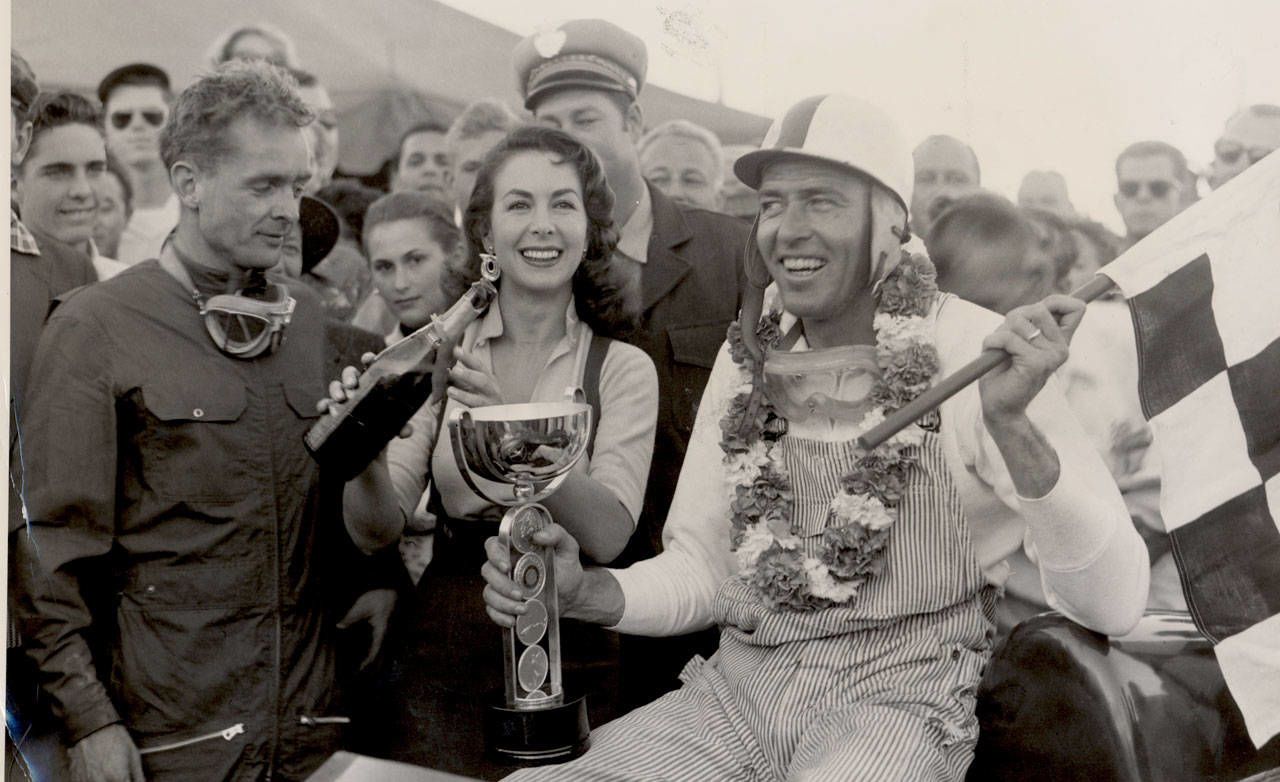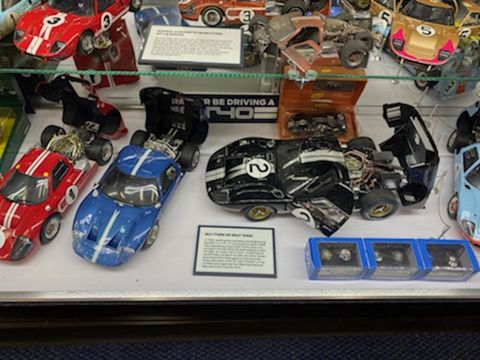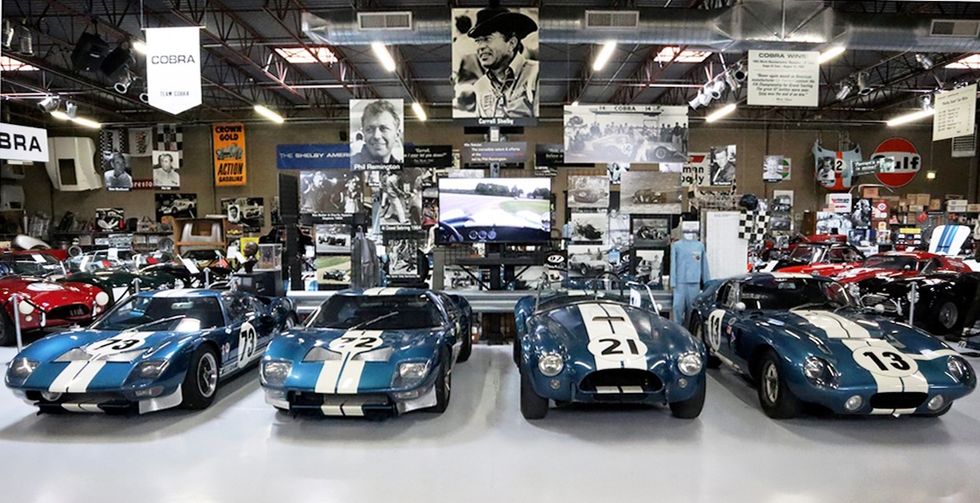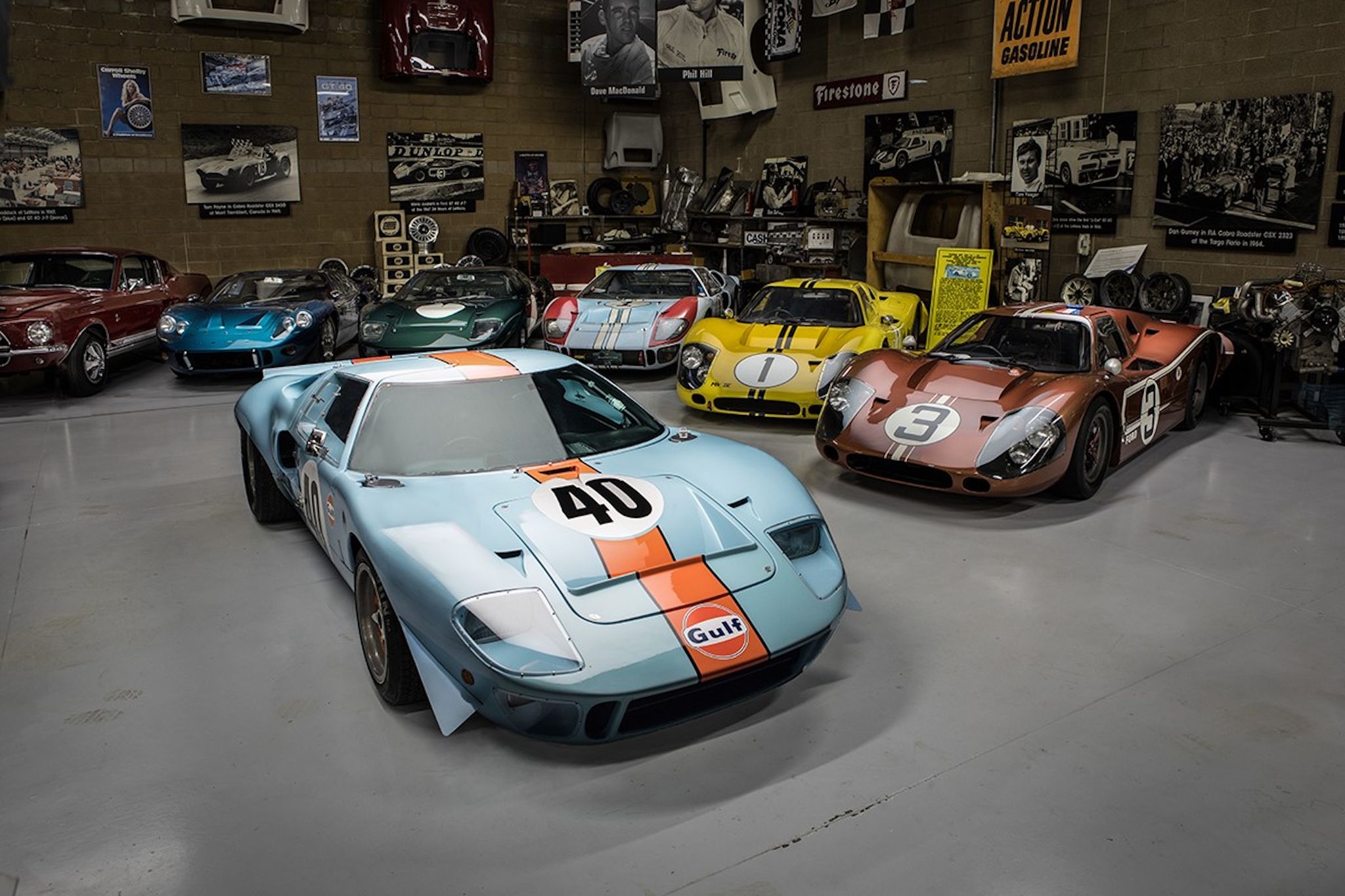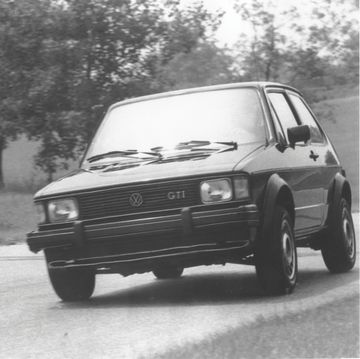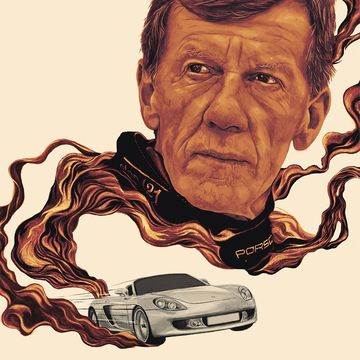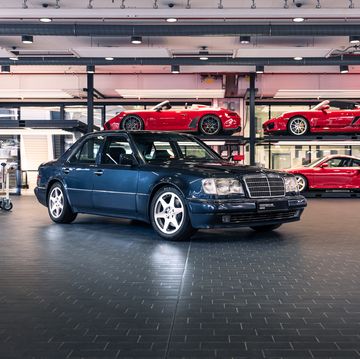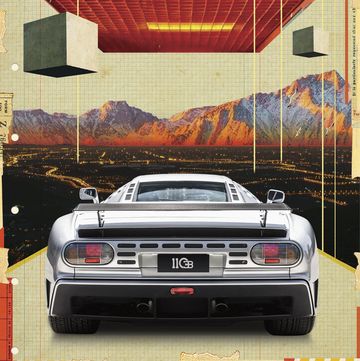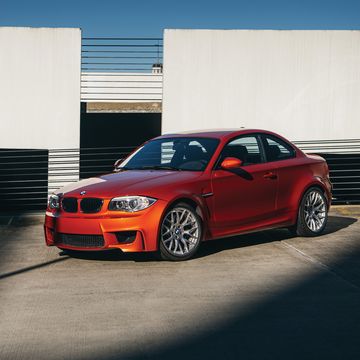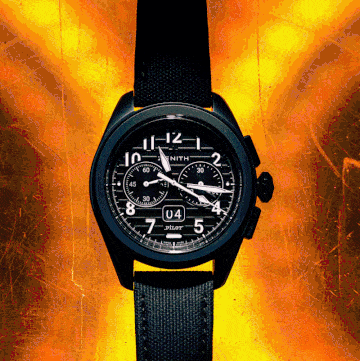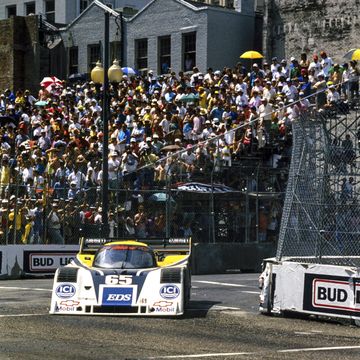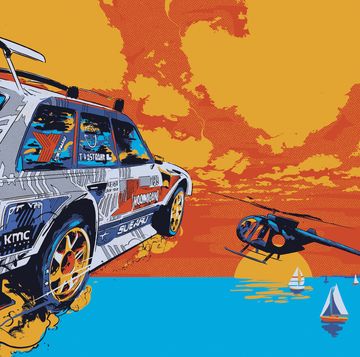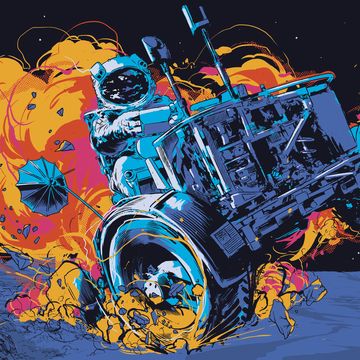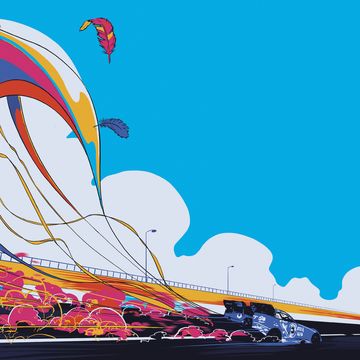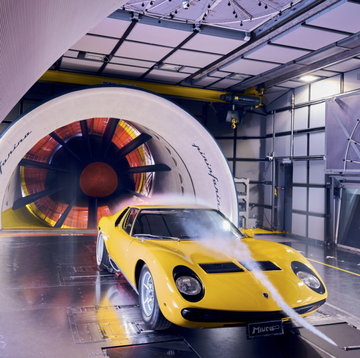Only once in my life have I gone into a bar and told the bartender, “Double whiskey please, and don’t stop pouring until I fall off this stool.”
It was September 2007. That morning, I had spent two hours interviewing Carroll Shelby at his office in Gardena, California. It was the best interview I’d ever done. Shelby regaled me with stories and insights. There was a magic about his charisma. It was intoxicating. He could weave stories about colossal figures in the motoring world, from Henry Ford II to Shelby American chief engineer Phil Remington, then toss in there that his favorite restaurant was Quiznos. Afterward, he’d insisted on driving me to the airport. One of his employees turned to me, behind his back, in a panic. “No!! He can’t see!” she whispered. “He’s nearly blind!”
The next thing I knew we were hammering north on I-405. Shelby was at the wheel throttling through traffic in a signature black-and-gold Shelby Mustang GT-H, trying to show me that he still had it. This was a guy who won the 24 Hours of Le Mans wearing chicken farmer overalls. When I got to the airport, I was so dizzied by the day that I went straight to the bar and got myself smashed. That is the kind of effect that this man could have on people.
It’s now been nearly a decade since Shelby passed away. But still, his fans are legion. No other motor sport figure has ever enjoyed the celebrity that Shelby does. There’s the factory-authorized Team Shelby club, the Shelby American Automobile Club (SAAC), Club Cobra, countless smaller clubs like Nor Cal Shelby and the Los Angeles Shelby American Automobile Club. There are multiple Shelby museums, an annual Shelby American Car Show, and the annual Shelbyfest rally. Numerous companies offer replica Cobras, from Superformance to Factory Five. For 46 straight years, SAAC has hosted a national Shelby convention, luring thousands of dedicated fans. The Segerstrom Shelby Event Center is just opening in Irvine, California. Ford still produces high-performance Shelby versions of the Mustang. There’s an entire global industry dedicated to preserving the heritage of the man and his team.
All of which begs the question: What is it about Shelby that commands so much passion? He never did much in Formula 1, the world’s biggest motorsport series. Never won any NASCAR races. Never won anything in IndyCar. So, what is it? The degree of dedication among superfans borders on the inexplicable.
Take for example, Drew Serb, a California businessman who founded The Cobra Experience, a Shelby museum in Martinez, California. Serb bought his first Cobra in 1974, a wrecked car for $1,500. His parents were furious with him because they thought the investment was stupid. “Look,” said his mother. “The car doesn’t even have door latches.” Serb sold that car four years later for enough money to buy another Cobra and to launch his business. Over the next decades, he collected enough cars, posters, literature, Shelby American tools, and other memorabilia to launch a bona fide museum. Today, it contains a highly-rare Dragon Snake Cobra, Dave McDonald’s King Cobra (the car that won the USRRC championship in 1963), and Cobra chassis #2129, in which Ken Miles won 12 of the 15 races he entered in 1963.
Even Serb admits that the Shelby spark is a mystery. “My ultimate goal is to continue on the legacy of Carroll Shelby,” he says. “I have no idea why that is so important to me. But it is.”
Another major figure in the Shelby world is William Deary, a healthcare entrepreneur living in Michigan. When Deary was a teenager, a neighbor of his had a 1968 Shelby Mustang GT500KR in his driveway—the KR standing for King of the Road, as any Shelby fan can tell you. “It was more than a car,” he later explained. “It was a piece of art.” He ultimately became a collector. Today, The Carroll Collection consists of t-shirts, posters, books, models, nearly 4,000 artifacts, and of course, Shelby automobiles, from the 1965 GT350 Mustang prototype No. 12 to the #2 Shelby American Ford GT40 Le Mans-winning movie car from Ford v Ferrari.
Like Serb, Deary admits that his passion is somewhat inexplicable. “I can’t really put my finger on why or how that captivated me,” he says. “But it did.” Deary does point out something interesting, however. “The secret of why Carroll Shelby and why the Shelby American team and the cars themselves are in a class of their own is really about Shelby understanding how to have the best people, people like Phil Remington and Peter Brock, who made the cars amazing. But these guys also understood branding before branding was even a term. Even if you couldn’t afford a car, you could still become part of the Shelby American team, even if it was just a t-shirt or a lighter or a keychain. It was about more than just a car. It was about a brand.”
He also tips his hat to the Shelby American Automobile Club and all the folks who started the registries to track the whereabouts of all the Shelby Cobras and Mustangs. “People love to be a part of the Shelby family,” Deary says. “People love to share their stories.”
For those who don’t know Carroll Shelby’s story (are there really any of you, out there?), it starts in rural Texas in the 1950s, when he was an unknown chicken farmer. He entered his first race and quickly became a sports car racing phenom, during the days when postwar grassroots motorsports was exploding in America. Shelby went overseas, won the 24 Hours of Le Mans in 1959 with Aston Martin, then came home and launched his own car, the Cobra in 1962. The Cobra beat Corvette routinely, astounding the American motorsport community. Then Shelby took it to Europe and beat Ferrari, making it the first American car to win the FIA world championship. He partnered with Ford to beat Ferrari at Le Mans with the GT40s. He was instrumental in creating the Dodge Viper, and even launched a bigtime chili company.
“The magic of Carroll Shelby is how he was constantly recreating himself,” says Steve Volk, president of the Shelby American Collection in Boulder, Colorado, the most important collection of Shelby cars and memorabilia in the world, with countless race-winning Cobras and Shelby American GT40s. (Volk co-founded this museum in 1996 with Carroll Shelby’s help, along with Volk’s wife Lisa, the vintage Cobra racing brothers Bill and Dave Murray, and the Larry Miller family.) Arguably more than any other, Volk can distinguish the ingredients of Shelby’s secret sauce.
“It’s different for different people,” he says. “For older guys, it’s about winning everything and beating Ferrari. For people a little younger, it’s the Cobra replicas—there’s an estimated 50,000 of them out there—and the fact that the Cobra is such a muscular, kickass car. Then for younger people, it’s the Cobra and the GT40 that they’ve raced in their videogames. We see it here at the museum all the time, 12-year-old kids who come in and know the story of Shelby. It just keeps on going.”
All of which comes to a simple conclusion: “Everyone can participate,” says Volk. “Carroll Shelby is the everyman’s hero.”
A.J. Baime is a Road & Track editor-at-large and author of Go Like Hell: Ford, Ferrari, and Their Battle for Speed and Glory at Le Mans.
A.J. Baime is the author of seven books, including Go Like Hell: Ford, Ferrari, and Their Battle for Speed and Glory at Le Mans, and The Accidental President: Harry S. Truman and the Four Months that Changed the World. An R&T editor-at-large, he has driven cars on racetracks all over the U.S. and Europe, going back to 2007. He is proudly the R&T staff’s slowest track driver.

